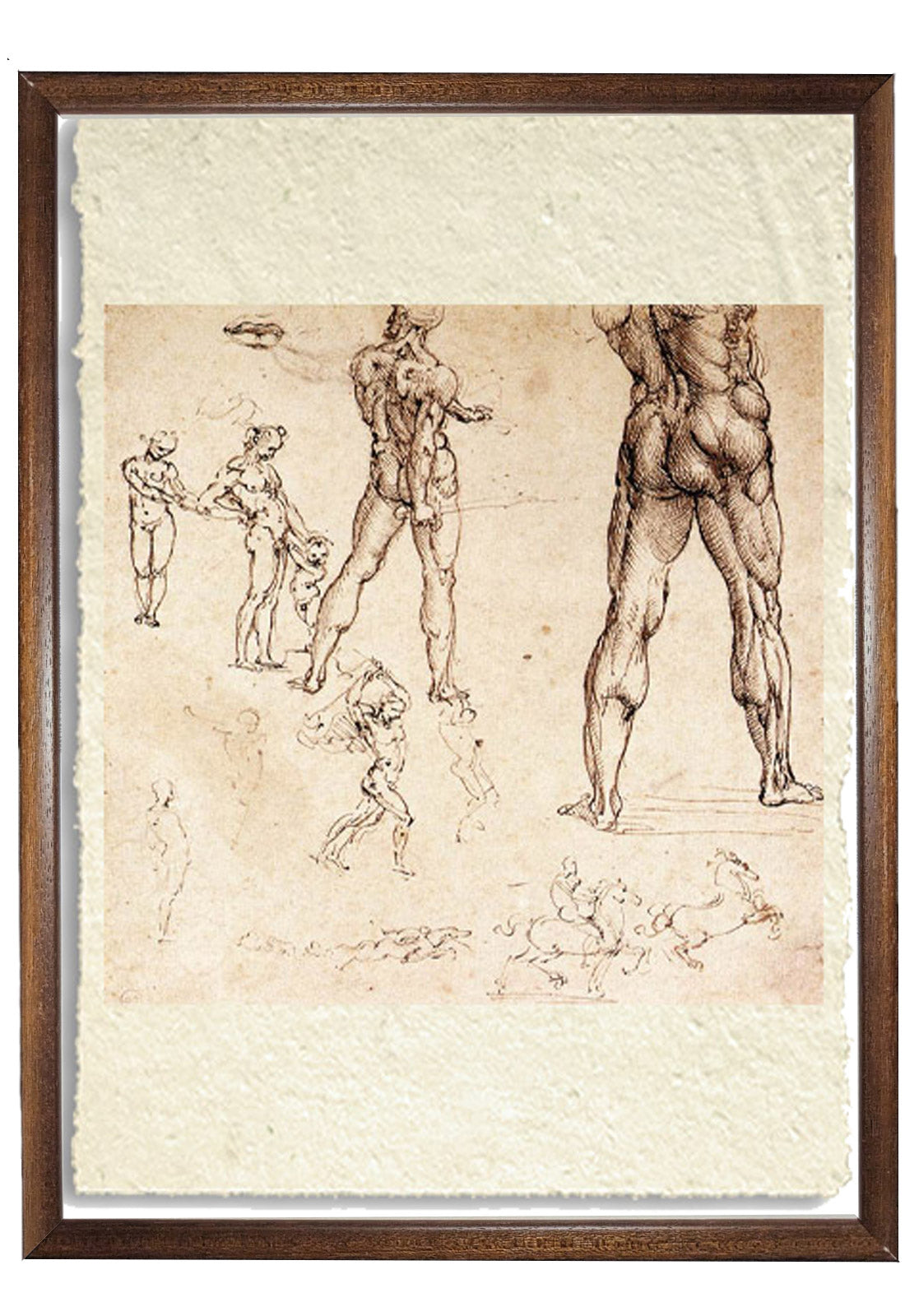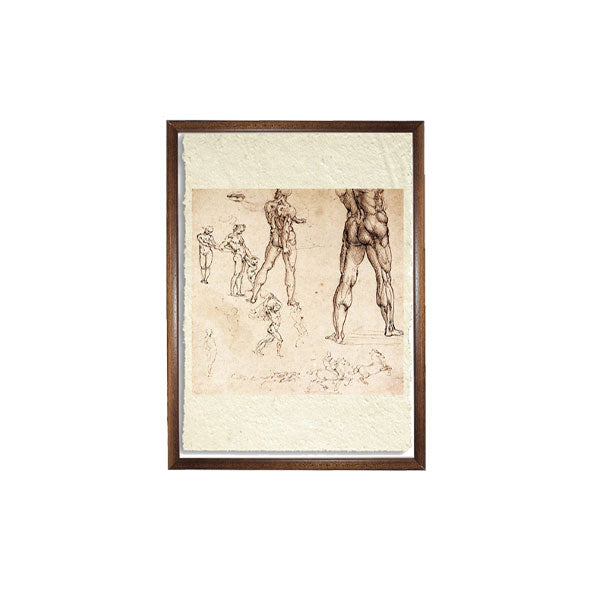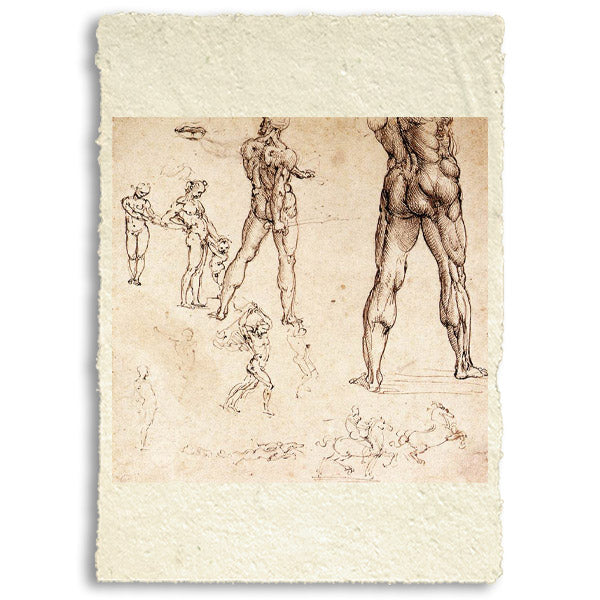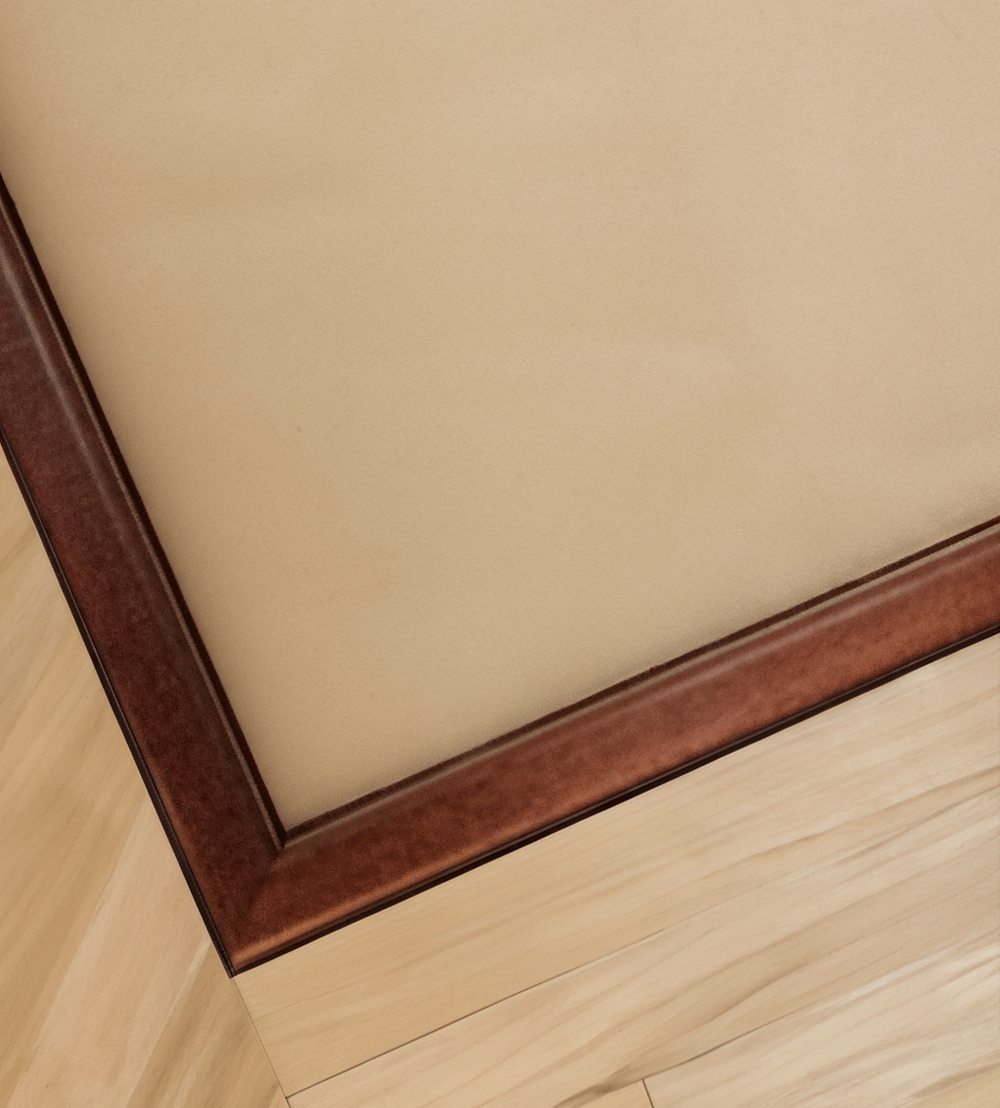1
/
of
4
Anatomical studies - Leonardo Da Vinci
Anatomical studies - Leonardo Da Vinci
Regular price
€234,00 EUR
Regular price
Sale price
€234,00 EUR
Unit price
/
per
Taxes included.
Shipping calculated at checkout.
Couldn't load pickup availability
SKU:TCEJ2QHXM3DPU
BUY ONLINE, INSURED TRACEABLE DELIVERY
Unique quality material
Print on handmade paper from Amalfi
Measurement : 29 x 42 cm
Material : work printed on very fine handmade Amalfi paper with fringed edges
Frame : Handmade light brown beech wood
YOU WANT A CUSTOMIZED PRODUCT
OR INFORMATION? WRITE TO US
The work
Leonardo Da Vinci Anatomical Studies 1504-06
Pen on red prepared paper, 253 x 197 mm
Royal Library, Turin
Leonardo da Vinci's anatomical studies represent a fundamental chapter in the history of science and art. Leonardo, known primarily as a painter, sculptor and inventor, also had a deep passion for human anatomy. Throughout his life, he conducted numerous studies on the human body, which were notable for their incredible precision and detail.
Starting in 1489, Leonardo began to study human anatomy systematically. He was interested not only in the external shape of the human body, but also in its internal structure. To better understand human physiology, Leonardo dissected more than 30 bodies, both men and women, including elderly people and children. These dissections allowed him to directly observe organs, muscles, nerves and blood vessels.
His anatomical drawings, which include detailed studies of bones, muscles, heart, brain, and other internal organs, are notable for their precision and artistic beauty. Leonardo did not limit himself to representing what he saw; he also tried to understand the functioning of the human body, formulating theories on blood circulation and the functioning of muscles and organs.
These studies were remarkably advanced for his time. Some of his observations anticipated discoveries that would not be made until centuries later. For example, Leonardo was one of the first to correctly describe the heart as a muscle and to suggest the concept of blood circulation, long before William Harvey formulated the modern theory.
However, his manuscripts and anatomical drawings remained largely unknown until the 19th century, as they were not published during his lifetime. Had they been disseminated more widely, they might have revolutionized the medical understanding of the human body in the Renaissance.
In summary, Leonardo da Vinci's anatomical studies are an extraordinary example of how art and science can converge, providing profound and advanced insights into the fields of medicine and anatomy, long before such concepts were widely accepted or understood.
Starting in 1489, Leonardo began to study human anatomy systematically. He was interested not only in the external shape of the human body, but also in its internal structure. To better understand human physiology, Leonardo dissected more than 30 bodies, both men and women, including elderly people and children. These dissections allowed him to directly observe organs, muscles, nerves and blood vessels.
His anatomical drawings, which include detailed studies of bones, muscles, heart, brain, and other internal organs, are notable for their precision and artistic beauty. Leonardo did not limit himself to representing what he saw; he also tried to understand the functioning of the human body, formulating theories on blood circulation and the functioning of muscles and organs.
These studies were remarkably advanced for his time. Some of his observations anticipated discoveries that would not be made until centuries later. For example, Leonardo was one of the first to correctly describe the heart as a muscle and to suggest the concept of blood circulation, long before William Harvey formulated the modern theory.
However, his manuscripts and anatomical drawings remained largely unknown until the 19th century, as they were not published during his lifetime. Had they been disseminated more widely, they might have revolutionized the medical understanding of the human body in the Renaissance.
In summary, Leonardo da Vinci's anatomical studies are an extraordinary example of how art and science can converge, providing profound and advanced insights into the fields of medicine and anatomy, long before such concepts were widely accepted or understood.





Scopri i pregiati materiali di Trizio Editore
Carta di Amalfi fatta a mano, cornice in legno di faggio e vetro museale. Guarda i particolari dei prodotti che renderanno la tua casa più elegante e preziosa.




